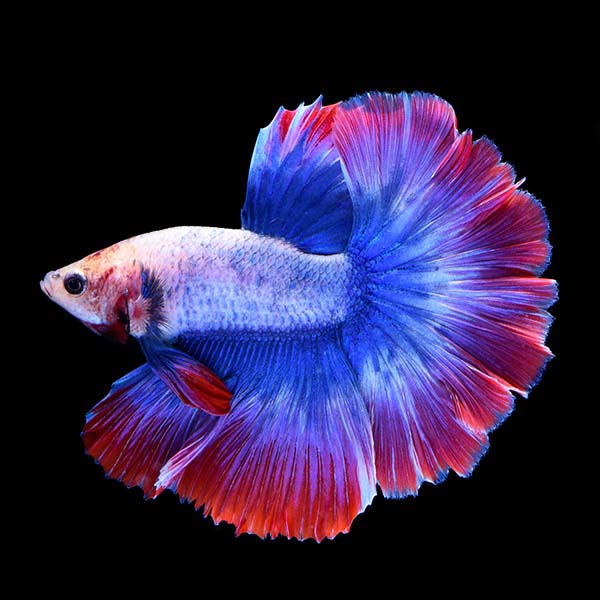Betta Fish Diet Regimen: What to Feed Your Betta for Ideal Health And Wellness
Betta Fish Diet Regimen: What to Feed Your Betta for Ideal Health And Wellness
Blog Article
Exactly How to Breed Betta Fish Successfully: Expert Strategies and Insights for Hobbyists Aiming To Expand Their Betta Collection
Breeding Betta fish requires a nuanced understanding of genes and ecological problems, making it essential for hobbyists to approach the process with both persistance and care. Developing an ideal breeding setting, picking the right pairs, and observing the complexities of their courtship habits are foundational actions that can dramatically influence the end result. Furthermore, the subsequent treatment of the fry is important for ensuring their healthy growth. As we explore these crucial elements, it ends up being clear that effective breeding is not practically the first pairing but encompasses a wider technique that advantages cautious consideration.
Understanding Betta Fish Genes
Recognizing the genetics of Betta fish is important for effective reproduction, as it influences attributes such as shade, fin shape, and behavior. Betta fish show a varied selection of shades and patterns, greatly determined by their hereditary makeup.
In enhancement to coloration, fin morphology is another considerable element of Betta genetics (betta fish). The shape and size of fins are influenced by different genetics, including those that figure out whether the fins are brief, long, or veil-shaped. Recognizing these genetic variations aids dog breeders anticipate the phenotypic results of their spawn
Additionally, behavioral traits such as aggression and territoriality can also be influenced by genes. These habits play an essential function in the breeding process, as they can influence generating success and the general character of the resulting fry. By thoroughly comprehending these hereditary concepts, breeders can make educated choices, ultimately enhancing their breeding programs and attaining preferable results.
Preparing the Breeding Environment
Producing an optimum reproduction atmosphere is vital for the effective reproduction of Betta fish. The initial action in preparing this atmosphere is to choose a suitable breeding tank, ideally ranging from 5 to 10 gallons.
Following, take into consideration making use of a sponge filter or an air stone to provide mild water circulation without creating solid currents that can stress the fish. It is vital to install plants or reproducing cones to supply concealing areas and promote comfort for the woman throughout the spawning process. Floating plants, such as Java moss or water sprite, can additionally develop a more natural atmosphere while helping with bubble nest building by the man.
Prior to presenting the reproducing sets, ensure the water is conditioned and without damaging chemicals, such as chlorine or heavy steels. betta fish. Routine water changes ought to be performed to keep ideal water high quality, boosting the chances of successful breeding. With these preparations in position, the breeding environment will support the health and well-being of both Betta fish
Choosing Breeding Pairs
Choosing the right breeding sets is crucial for achieving successful Betta fish reproduction. When choosing your reproduction pairs, consider numerous vital variables consisting of health and wellness, temperament, and genetics. Healthy and balanced Betta fish show dynamic colors, clear eyes, and energetic habits. Choosing fish that are without disease makes certain a much better chance of creating practical children.
Personality is another essential factor to consider, as Betta fish are understood for their aggressive nature. It is recommended to pick a male and woman that exhibit suitable personalities to lessen stress and anxiety during the breeding procedure. A calm man can motivate a smoother courtship, while a lady that is also aggressive may disrupt the procedure.
Genetic background additionally plays a significant duty in the quality of the offspring. Reproducing fish that are genetically diverse can reduce the danger of genetic health and wellness issues and improve the general vitality of the fry. It is helpful to look into the lineage of both the male and lady, concentrating on preferable characteristics such as fin type, shade patterns, and size.
The Breeding Refine
The reproduction process of Betta fish requires cautious preparation and focus to detail to guarantee a successful end result. At first, it is vital to prepare an appropriate reproduction container, preferably a 5-10 gallon aquarium with a temperature level preserved at 78-80 ° F. The container needs to be geared up with a heating system, filter (preferably sponge kind to stay clear of solid currents), and plenty of marine plants for the lady to hide.
Once the environment is established, introduce the selected reproducing set to the tank, allowing them to adjust. Observe their behavior; the man will certainly show intricate courtship rituals, consisting of flaring his fins and constructing a bubble nest. If the discover this woman shows passion, she will show vertical red stripes indicating preparedness for spawning.
When the female is receptive, the set will certainly engage in a breeding embrace, during which the male fertilizes the eggs. Keeping ideal water problems throughout this period is essential for the growth of healthy Betta fry.
Caring for Betta Fry

Feeding Betta fry is essential, as they call for a diet regimen high in protein. They read here can be fed infusoria or liquid fry food, transitioning to finely crushed top notch pellets as they grow. Feed little portions multiple times a day to motivate healthy growth without overwhelming the tank with uneaten food.

As they develop, check their development very closely and separate any type of aggressive people to avoid injury. By offering pop over to these guys a nurturing atmosphere and appropriate nutrition, enthusiasts can efficiently increase Betta fry right into dynamic, healthy fish, ultimately enhancing their breeding endeavors.
Final Thought
Effective Betta fish breeding needs careful focus to genetic option, environmental conditions, and treatment for the fry. By understanding the genes of Betta fish and preparing a proper reproduction atmosphere, enthusiasts can enhance the possibilities of producing lively, healthy offspring.
Report this page